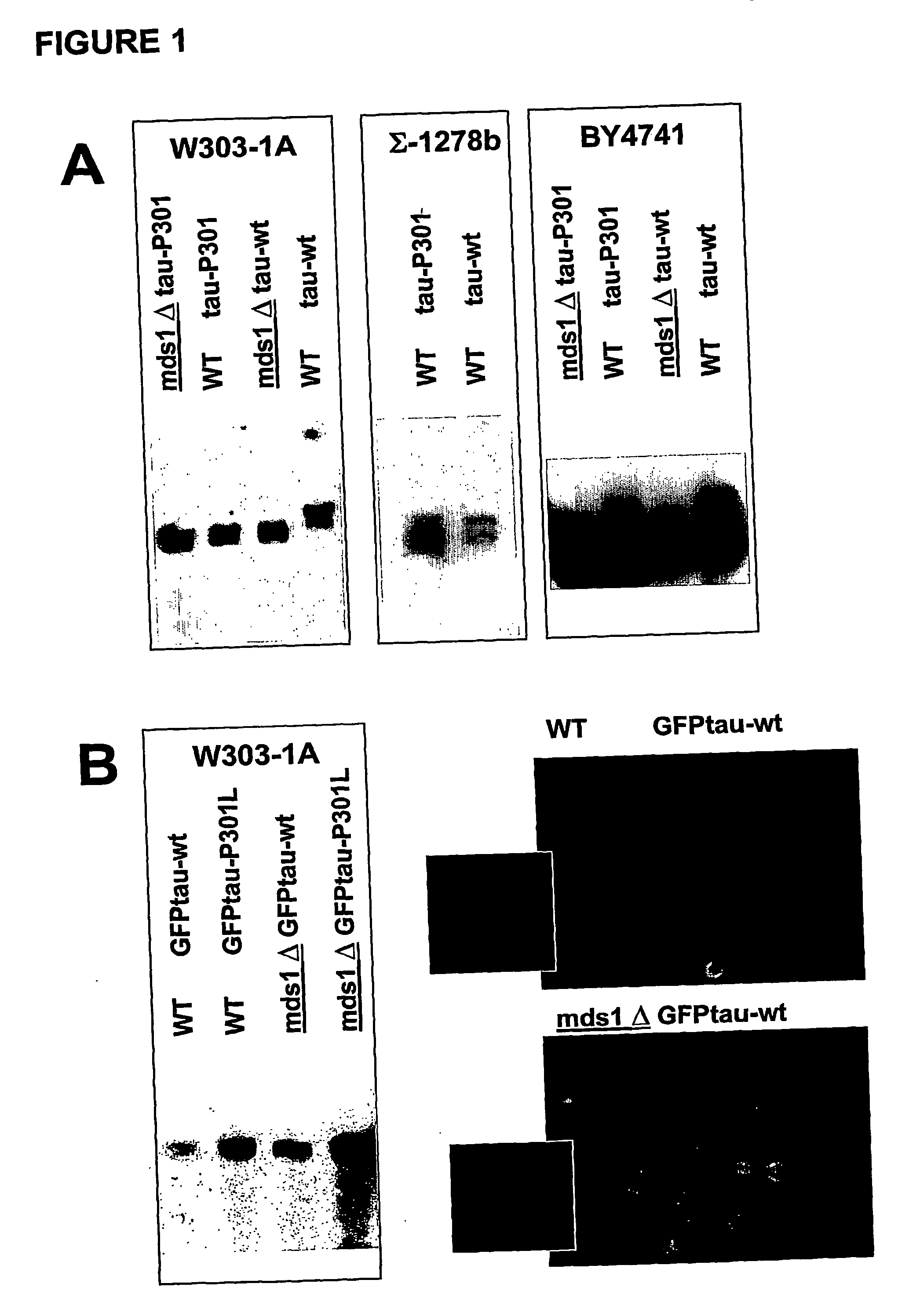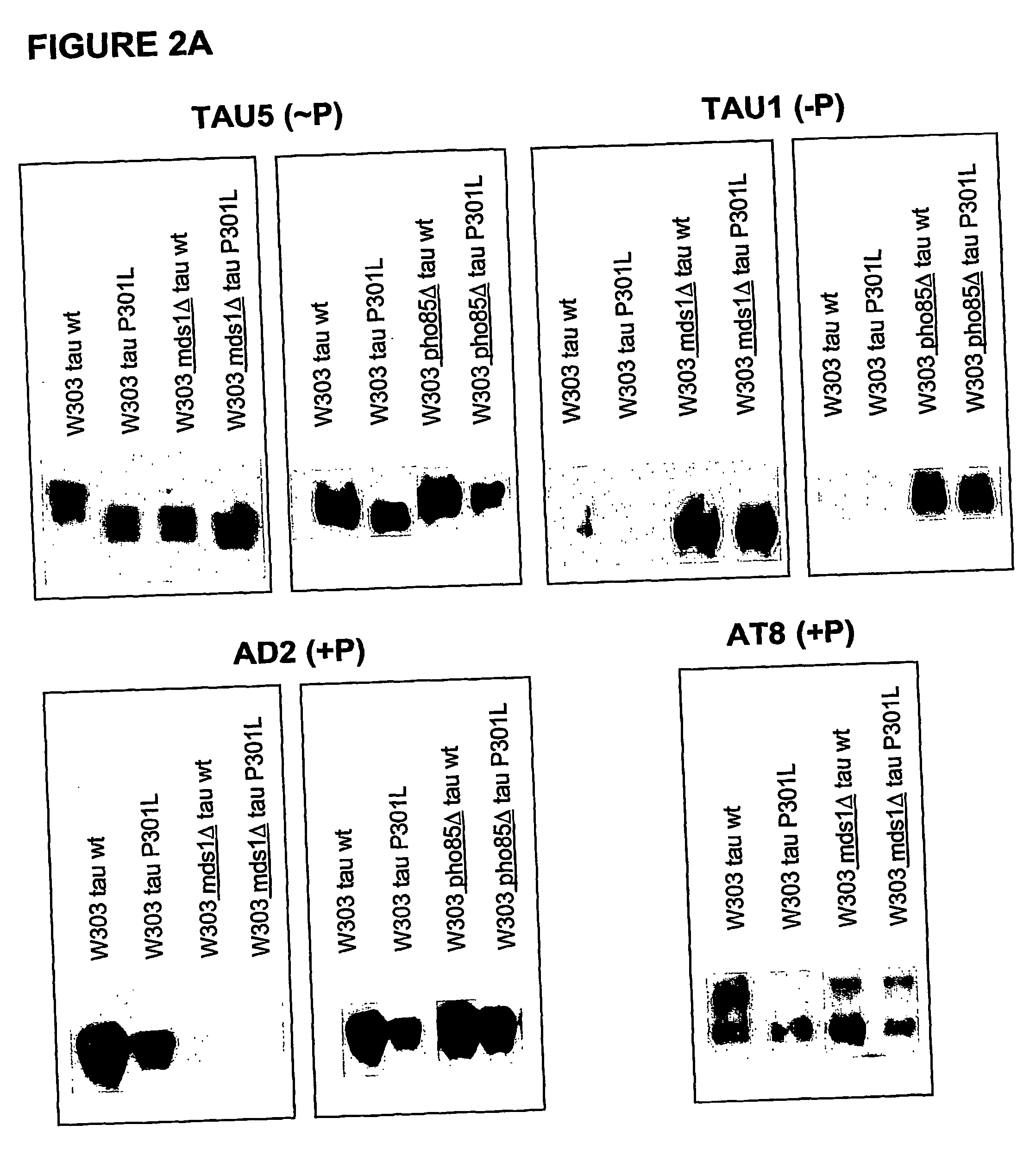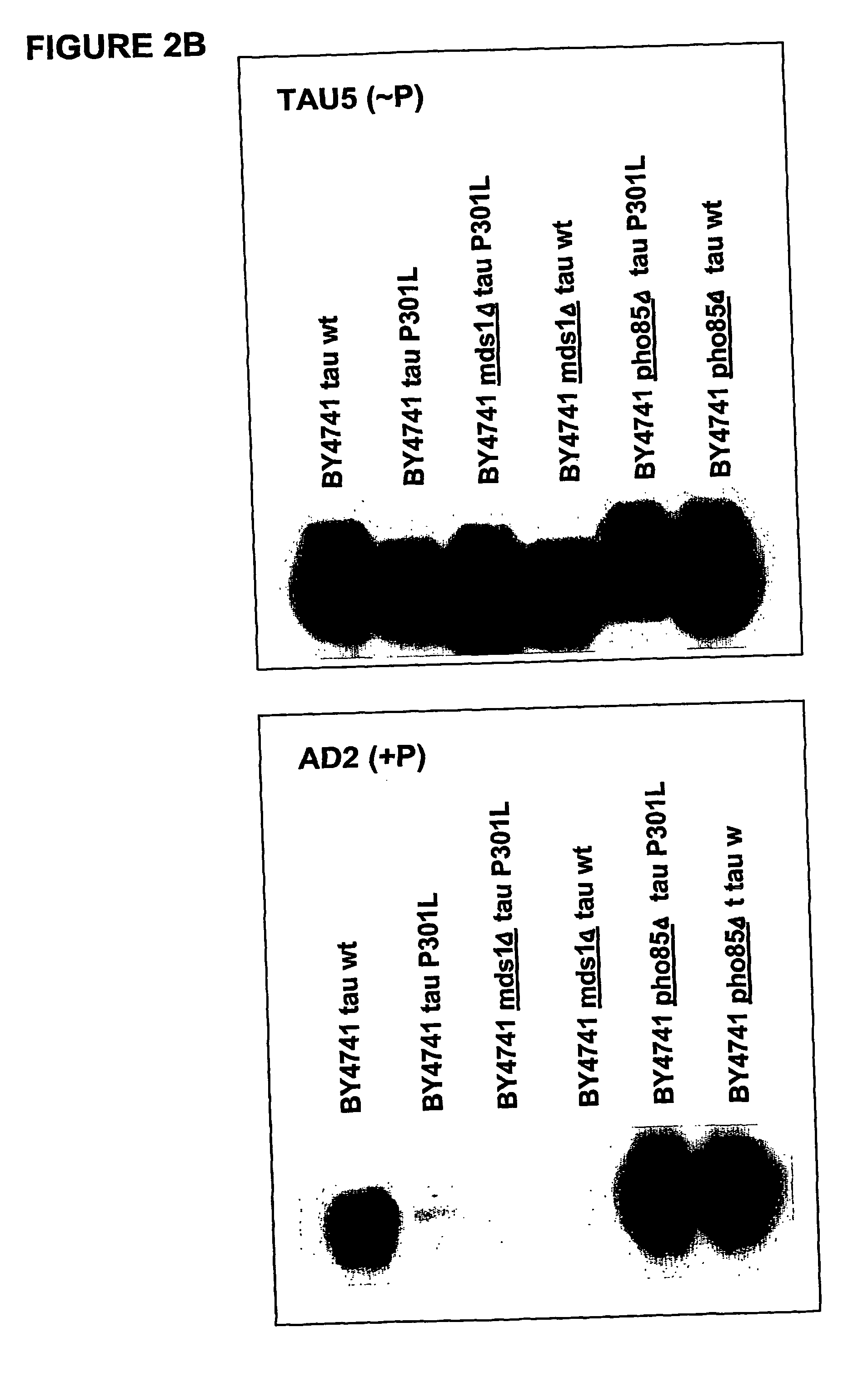Tau-opathy model
a tauopathy and yeast technology, applied in the field of yeast model for tauopathy, can solve the problems of affecting the axonal and possibly dendritic transport, heavy damage to the neurofibrillary tangles, and inability to function normally, and achieve the effect of modulating the phosphorylation state of the protein tau
- Summary
- Abstract
- Description
- Claims
- Application Information
AI Technical Summary
Benefits of technology
Problems solved by technology
Method used
Image
Examples
example 1
Expression of Human Protein Tau in Saccharomyces cerevisiae: Human Protein tau is Phosphorylated when Expressed in Yeast
[0085] To demonstrate that human protein tau, both wild-type and mutant P301L, can be expressed in yeast, we performed Western blotting on crude extracts from transformed W303-1A and BY4741 wild-type strains and isogenic mds1 strains that lack one of the yeast genes encoding a kinase homologous to the human tau-kinase GSK-3β. For detection we used the monoclonal antibodies Tau-5, which is the phosphorylation-indenpendent “pan”-tau antibody. The cell lines W303-1A -HuTau-wt and W303-1A-mds1-HuTau-wt have been patent deposited (IDA deposit) at the Belgian Coordiated Collection of Microorganisms—BCCM IHEM-Collection and received the numbers of respectively, IHEM 19160 and IHEM 1961.
[0086] Results: As shown in FIG. 1, we obtained considerable expression of human wild-type tau and human mutant tau-P301L in yeast strains, whereby its immuno-reactivity is retained as in...
example 2
Expression of Human Protein Tau in Saccharomyces cerevisiae: Human Protein Tau is Phosphorylated in Yeast at the same Phospho-epitopes as in Brain of Alzheimer Patients
[0089] To confirm if the heterologous expressed protein tau is post-translationally modified by phosphorylation in yeast, a more elaborated phosphorylation mapping study was performed on crude extracts obtained from the transformed W303-1A and BY4741wild type strains and their isogenic mds1Δ (lacking one of the yeast genes encoding a kinase homologous to the human tau-kinase GSK-3β) and pho85Δ strains (the latter being deficient for a kinase which is homologous to the second known tau-kinase, i.e. cdk5). As monoclonal antibodies we made use of AT-8 and AD2, which recognize only phosphorylated epitopes, and Tau-1, which detect non-phoshorylated epitopes
[0090] Results: The positive immunoreaction with all the different antibodies was evident in all experiments performed. Some differences in intensity in the different ...
example 3
Expression of Human Protein Tau in Saccharomyces cerevisiae: Heterologous Expressed Human Protein Tau is Less Phosphorylated in Yeast Strains Overexpressing the Protein Phosphatase PP2A
[0095] To illustrate that heterologous expressed protein tau is a substrate for protein phosphataes in yeast, we monitored tau-phosphorylation in a wild-type strain and a wild-type strain with overexpression of PPH21, one of the yeast genes encoding the phosphatase PP2A.
[0096] Results: As shown in FIG. 3, overexpression of PPH21 and hence increased PP2A activity, enhanced immunoreactivity of protein-tau for the antibody TAU-1 which recognizes non-phosphorylated epitopes.
[0097] In agreement to what has been suggested based on in vitro data with mammalian extracts, our data demonstrate that protein-tau is dephosphorylated in vivo when the activity of PP2A is increased in yeast. This surprising result demonstrates again that yeast can function as model study and to identify novel components involved i...
PUM
| Property | Measurement | Unit |
|---|---|---|
| Composition | aaaaa | aaaaa |
| Solubility (mass) | aaaaa | aaaaa |
| Biological properties | aaaaa | aaaaa |
Abstract
Description
Claims
Application Information
 Login to View More
Login to View More - R&D
- Intellectual Property
- Life Sciences
- Materials
- Tech Scout
- Unparalleled Data Quality
- Higher Quality Content
- 60% Fewer Hallucinations
Browse by: Latest US Patents, China's latest patents, Technical Efficacy Thesaurus, Application Domain, Technology Topic, Popular Technical Reports.
© 2025 PatSnap. All rights reserved.Legal|Privacy policy|Modern Slavery Act Transparency Statement|Sitemap|About US| Contact US: help@patsnap.com



